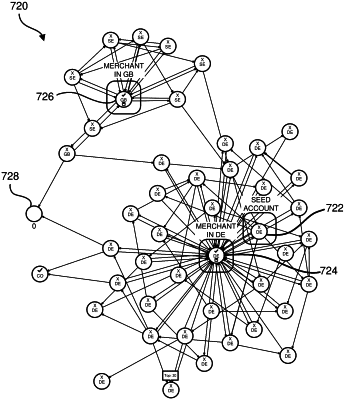| CPC G06Q 20/401 (2013.01) [G06F 16/9024 (2019.01); G06F 16/9027 (2019.01); G06Q 20/40 (2013.01)] | 20 Claims |

|
1. A system, comprising:
a non-transitory memory; and
one or more hardware processors coupled with the non-transitory memory and configured to read instructions from the non-transitory memory to cause the system to perform operations comprising:
displaying, on a computer device, a presentation of a graph comprising nodes connected with each other via directional edges, wherein the presentation has a non-hierarchical structure;
selecting, from the nodes of the graph, a seed node;
assigning each of the nodes in the graph to one of a plurality of layers within a layered hierarchical structure based on a traversal of the graph from the seed node;
iteratively identifying a node from the graph and determining whether to reassign the node to a different layer in the plurality of layers within the layered hierarchical structure based on a goal of minimizing reverse edges in the graph;
transforming the graph based on the layered hierarchical structure;
detecting a pattern of activities corresponding to a subset of nodes from the graph based on analyzing the transformed graph; and
presenting the transformed graph on the computer device, wherein the subset of nodes is presented differently from other nodes in the graph based on the detected pattern of activities.
|